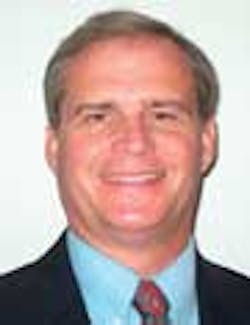The Marvin K. Mooney Exit Strategy
BY Steve Wolff, DDS
We may be on the cusp of a trend that has been predicted for many years. In spite of a lack of career opportunities for many recent graduates, many doctors who were educated in the '60s and '70s are not finding successors for their practices. The result is to "lock and leave," and unfortunately, we have witnessed some recent examples.
Peak dental school enrollment occurred in the late '70s when the 1978 class enrolled over 6,300 students. While the 2008 graduating class of about 4,800 students represents a nearly 25% decline, the actual percentage may be much higher in some parts of the country. For example, my UMKC class of 1977 graduated 160 students, while in 2010 only 96 DDS degrees were conferred, representing a 40% decrease. If you filter out graduates from each class that go on to specialty training, public service, or military careers, there will be about two practices available for every potential buyer.
Current economic issues and the increase in life expectancy have changed a lot of dentists' plans. While in the short term this delay in retirement has meant a shortage of quality opportunities for younger doctors, there inevitably has to be a bursting of the bubble, and maybe we have witnessed the first wave. Let's examine some of the reasons why some practices are more venerable than others, and how that's playing out in the marketplace.
Location will play a major role in determining whether a practice can be transitioned to a new owner. The large class graduates of the '70s could not all stay in the big cities, and many journeyed out to rural areas, established practices, and had great careers and lifestyles. Unfortunately, that is not the trend in the current, smaller classes. For a variety of reasons, most will seek opportunities in large metro areas. When retirement day finally comes, many rural doctors will lock the door, help their staff members find jobs, put notices in the local newspaper, send letters to their active patients, and leave the office.
Practices that are too far behind in technology, curb appeal, fees, and profitability are becoming increasingly hard to transition. While not everything has to be state-of-the-art, buyers with a choice that is closer to their standards will move in that direction. Granted, you may not recover the cost of a major technology upgrade, but without it you may have little chance in finding a successor. Lock and leave.
There is no denying that our company is carrying the lowest number of viable listings that we've had in 10 years. Conversations with other transition consultants around the country suggest that we're witnessing a nationwide trend of retirement-age dentists continuing to work in their practices. It has become very common for doctors to cut back to fewer work days, and since most have little or no practice debt, they can reduce their production by 25% to 40%, pay the overhead, take a few dollars home at the end of the month, and not have to draw down on their retirement funds.
What is being overlooked, however, is the loss of practice value. In every market there is a minimum amount of revenue needed for a buyer to pay the overhead, pay the acquisition debt, and have enough left over for living expenses, taxes, and student loan debt. If a retirement-aged doctor makes the practice too small, it may not be sellable, and he or she will be forced to lock and leave.
Quality practices in good locations have the best chance of maintaining their value and being transitioned, but many doctors may be disappointed in the final disposition of their legacies. Lack of motivation, disability, and other interests will eventually cause doctors to take the path of the Dr. Seuss character, Marvin K. Mooney — "The time had come, so Marvin went."
Steve Wolff, DDS, is a member of ADS (American Dental Sales, Inc.) and the broker/partner in EMA Dental Practice Sales (formerly Evan Myers and Associates) in Kansas City, Mo. He can be contacted at (888) 419-5590 ext. 816, or visit the company's website at www.emadentalpracticesales.com.

